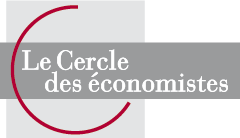Adapting the city
Session 17
Amphi 4
-
Course B
July 3, 2021
08:50 - 09:55
Overview
Adapting the city! The imperative can be interpreted in many ways which, taken together, form a particularly dense set of specifications. For adapting the city means:
- anticipating that in 2050, 70% of the world’s population will be urban (compared to just over 50% today) and deploying the equipment and infrastructure to meet the continuing dynamic of rural exodus;
- in particular, generalise essential urban services (such as water supply, which is universal only in the OECD);
- reduce the environmental footprint of the activities carried out there, in particular CO2 emissions (cities account for 70% of global emissions), but also various local pollutants, such as those that affect air quality (a major source of mortality), destroy biodiversity, etc;
- and to make this ‘new’ city resilient to the climate disruptions that are inevitable, even in the most voluntarist scenarios (those that would make it possible to contain the average temperature increase to 1.5°C by the end of the century).
One (more) challenge is emerging: that highly resilient cities are also inclusive. So that mid-century urbanites can find a place in them, without drastic selection by means. A challenge that is utopian at the moment.
Speakers




Coordinator

Moderator













